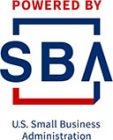Great employees are made from day one. Their first impression of your company, the imprint of how those first few days felt, will stick with them throughout their tenure there. It’s in the best interests of both parties to start that relationship off on the right foot. A structured, well-planned and executed employee on-boarding program can make the difference between successful, happy employees who fulfill their potential, and frequent turnover.
A recent Glassdoor study found that great employee on-boarding can reduce turnover by a whopping 82%. The Society for Human Resource Management also compiled statistics showing that:
- New employees who went through an on-boarding program were 58% more likely to still be with the organization three years later
- Companies that do on-boarding well showed 50% increased productivity from new hires
- Of companies with a structured on-boarding program, 54% reported higher employee engagement
- The average cost of hiring a new employee is around $4,000
Given that the cost of employee turnover can be huge, it’s imperative to your bottom line—and your company culture—to invest time and energy into creating a robust and sustainable employee on-boarding practice.
Think beyond processes and paperwork.
On-boarding is much larger than just orientation. While a critical part of on-boarding is completing the legal requirements, providing employees with necessary background info (such as employee handbooks), and making sure they can use email, true on-boarding goes much deeper to truly support them for success.
While each small business will need to research, structure, and evaluate an on-boarding program that works for their unique business and employees, there are a few important considerations that apply across the spectrum.
Whether you have three employees or 300, here are six best practices for on-boarding new employees.
1. Start before your employee does.
On-boarding starts the moment they accept your offer. There are a number of things you can do before day one help your employees hit the ground running. These include:
- Arranging to have paperwork signed in advance
- Providing benefits information and options in advance so employees have time to research selections
- Having a manager reach out personally to form a human connection
- Preparing their work space and setting up digital permissions for email accounts and network access
- Communicating clearly about what they can expect the first day and week
- Informing them of the dress code up front so they can feel comfortable and confident on day one
2. Make it personal.
To increase their immediate sense of connection to your organization, give your employees a sense of purpose and place. While this is a little harder to define for each individual company and employee role, it’s worth the effort to explore ways to ensure new hires feel welcome, see their unique contribution, and understand how they fit into their team and the organization’s goals from the start. Some ideas include:
- Introduce them to as many coworkers as practically possible
- Have a team meeting to clarify for all members what each person’s role is
- Plan to have someone take them to lunch on day one
- Have work ready for them to start on
3. Clearly communicate duties, goals, and expectations.
Clear expectations are a must for both maximizing the productivity of your team and for helping your employees feel confident in their roles. Define success for your new hires from the start. Outline job responsibilities and expectations, as well as giving new employees clear objective goals. They also need to know the management structure, roles of team members, and what the feedback and assessment processes are for hitting their goals.
4. Outline resources.
Clearly let new hires know who they should go to in the event they have a question or need support. If you have a larger organization, codify this in writing (because an overwhelmed new employee is unlikely to remember after the flood of information on day one. Organize work flow to include working with teammates, or job shadowing, for the first days or weeks to maximize the natural transfer of procedural and institutional knowledge.
5. Buddy up.
Buddy programs, mentoring, or coaching during on-boarding pair each new employee with a seasoned employee who is assigned to check in regularly. It’s a more informal relationship, promoting encouragement, friendship, and community-building. The scope of their support is broad, and encompasses many finer details that don’t come in “official” training but are known to boost employee integration, such as tips on company culture and sharing lunch options and local restaurants.
6. Don’t cut it short.
Official on-boarding shouldn’t end when the paperwork is turned in. Depending on their role in your company and the complexity and length of their projects, formal on-boarding may be relevant for a minimum of 90 days and up through their first year. At minimum, plan to check in with a new employee after the first week, first month, and first 90 days to identify and fill any holes in training or support, and to elicit feedback from the employees about what they still need. This serves a dual purpose of helping refine a company’s on-boarding process and also helping new employees feel their input is valuable.
Great on-boarding practices boil down to three elements: expectations, support, and relationships. Set your new hires up for success by telling them clearly what they need to do, giving them the tools and resources to do it, and helping them feel like part of the team. Hit these notes right and you’ll increase your chances of reaching your business’s goals with happy, productive, and long-term employees.




